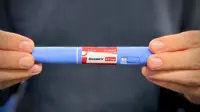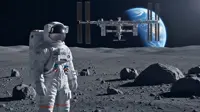ESA working on air-breathing space thruster for satellites
09 Mar 2018
The European Space Agency (ESA) has built and fired an engine which runs on air, making it the the world's first electric thruster that could allow the operation of satellites in very low earth orbits for extended periods of time.
According to experts, the atmosphere-fuelled engine could one day propel satellites skirting around other planets like Mars, according to the Agency.
Electric thrusters in satellites compensate for air drag at very low orbits, but their lifespans, are however, cut short by a limited onboard propellant supply.
An engine running on air could theoretically sustain itself much longer on molecules from the edges of a planet's atmosphere.
The new dual-stage thruster developed by space technology companies Sitael and QuinteScience under the ESA's Technology Research Programme, catches and compresses air molecules and then charges them.
A novel intake system first captures the molecules rather than letting them bounce away, the thruster then charges them with electricity. Gaining acceleration from the charge, the air molecules flow out of the engine, thrusting it forward.
The device was tested by the team in a vacuum chamber to simulate the environmental conditions 125 miles above sea level and they ensured that the engine could fire repeatedly with a propellant called xenon, which successfully produced a blue plume.
Studies on air-breathing electric thursters (ABET) have beeen in progress at the ESA for over a decade and in 2007, a study concluded that the technology "could provide a promising innovative solution" for low Earth orbit (LEO) travel.
''This project began with a novel design to scoop up air molecules as propellant from the top of Earth's atmosphere at around 200 km (124 miles) altitude with a typical speed of 7.8 km/s (17448 MPH),'' says ESA's Louis Walpot in a press release.
"The team ran computer simulations on particle behaviour to model all the different intake options, but it all came down to this practical test to know if the combined intake and thruster would work together or not," Walpot says.



















